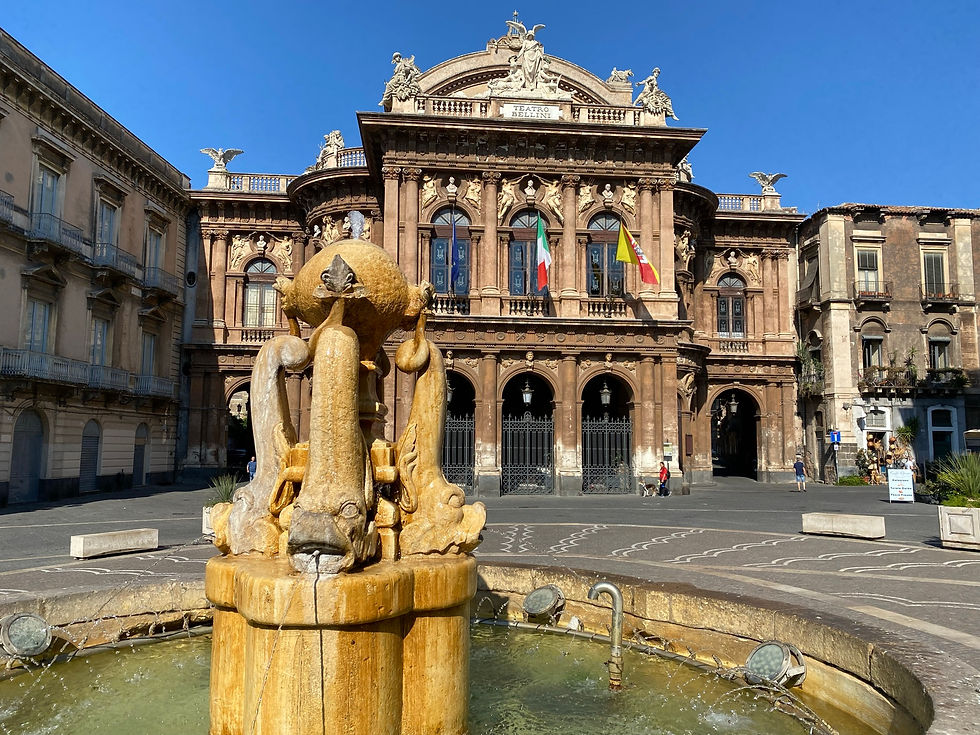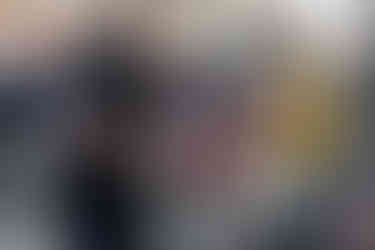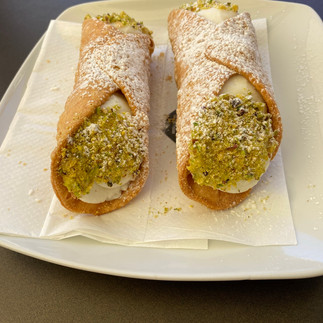Country: Italy
Region: Sicily
Time of visit: June 2021
Duration of visit: A full day
My rating: 7/10

Catania was the first stop on our tour of Southern Sicily.
Catania is the main city of south-eastern Sicily; its skyline, characterized by the profile of Etna that looms behind it, reminds in some way the image of Naples with Vesuvius. It is an ancient city founded by the Greeks in the 8th century BC; throughout its history it has suffered numerous natural disasters, in particular earthquakes and volcanic eruptions, which have greatly affected its appearance
My expectations of the city, before visiting it, were conflicting. On the one hand I expected to see a large city full of baroque palaces, somehow the capital of south eastern Sicily, where baroque architecture has left such important traces. Another part of me had reservations, which arose from the fact that, wherever I looked, all the indications and photographs of the city boiled down to four institutional places in the city center, as if Catania had nothing to offer but the Duomo, the famous statue of the elephant, symbol of the city, and little else.
The first impact with the city was not promising; arriving from the airport, in addition to the shock of entering the traffic of a Sicilian city and having to quickly adapt, a matter of life or death, to the driving rules of the place, all different from those of any other western city, we crossed a series of peripheral areas where the carcasses of cars and rubbish abandoned in the open seemed to be the usual urban equipment.
Another aspect that I believe stimulates the sensitivity of even the less attentive tourist who, arriving in Catania, leaves the airport to get closer to the city, is the relativity of urban planning. Anyone living in Italy knows how the power of organized crime after WWII influenced the disorganized growth of southern Italy (little film club moment: go and get Francesco Rosi's Le mani sulla città and Damiano Damiani's Il giorno della civetta): concrete monsters in theoretically untouchable nature reserves, public works unfinished for decades, roads and bridges built with materials more suited to model making than construction industry... The 20-minute journey that separates the airport from the city is all a succession of bridges that simply shouldn't be there, of intersections that seem designed by the Mad Hatter on a particularly creative day, of buildings that seem momentarily forgotten in a place where everything you would expect except a palace and so on.
Nonetheless, I tried to maintain an open minded attitude, avoiding judging the sub par hygienic conditions, the generalized chaos and the perfectible management of public structures.
Me, my partner and my children are all lovers of good food and, leaving for Sicily, we all had at least one clear goal: to dive head down in the local cuisine, starting with the famous Sicilian breakfasts, which in the rest of Italy are cloaked in an aura of legend. Therefore, before dedicating ourselves to more traditional tourism by visiting all the main monuments of the city, we soon headed to what was indicated by one of my reference food blogs, as one of the best breakfasts in the city: Lanzafame (my rating: average). Below is the picture of my fist real, hearty, sicilian granita (almond and pistachio): many other were soon to follow...
While we were having breakfast we looked around curiously trying to get used to an anarchic and non-regulatory environment, where 10-year-old Children sit in the driver's seat, the average occupancy of seats on a scooter is 3 people, street traders sell every possible commodity product on every street corner, feeding some doubts about the compliance of administrative licenses.

After breakfast, we headed towards the center of the city, but the landscape of rubble and abandonment continued to accompany us, fueling my perplexity; Was this really the beautiful Baroque city that was mentioned in the guides? Or maybe we were in Beirut after the latest devastating bombing...

As I said, the choice of the itinerary on this trip to Sicily was conditioned by the presence of my children. If I had had to satisfy my needs alone I would not have visited an area as large as the whole South of Sicily, but I would have restricted the visit to the South East only, dedicating more time to every single place; but with my children I necessarily had to make different choices, limiting myself to looking only for places that could arouse the "wow effect" in them and avoiding putting too many expectations on them, requiring them to understand and appreciate aspects of a trip that , by age and background, they are simply not yet able to appreciate.
This was true right from the start in Catania, where we limited ourselves to a one-hour casual tour of the back streets of the city center and visiting the main monuments. I suspect that in this way we have given up on discovering part of a city that probably holds more beauties than I have been able to appreciate, so my judgment on Catania must inevitably remain suspended, at least in part.
After a quick stop at Castello Ursino, which houses a museum that I chose not to visit, we quickly headed to our first stop: the Pescheria di Catania, the fish market, or Piscaria, as it is called in the local dialect which, in addition to the inheritance of the Greek and Arabic languages, also preserves more marked echoes of Latin than those left in the Italian language. I am a food enthusiat, I love the sea, I am a diver and a lover of marine life and I like to visit the markets, which are normally a privileged way to learn more about the uses and customs of a city and to understand its identity; I had read a lot about Catania's famous fish market, often represented as the beating heart of the city; Sicily is an island and the sea is inevitably a fundamental element of Sicilian life; literature (Giovanni Verga comes to mind to anyone who has studied in Italy) has handed down to us the image of Sicilians as a people of fishermen and therefore I had quite high expectations of a place that I expected to be something more than a commercial event, rather a cultural expression. However, the Catania fish market was the first partial disappointment.
First of all, it is quite small; here my expectations were probably wrong; Catania is not a metropolis and the fish market can only be commensurate with the size of the city. The market, however, is substantially reduced to three joint squares, where probably about forty stalls are housed. I had read that the visit to the market took an entire morning; I do not exclude that, having the time, not having three impatient teenagers along and adopting a particularly idle mindset, one can also linger an entire morning in attending the negotiations for the sale of fish, to the merchants praising the qualities of their products, to the variety of the species on display, but personally, after about an hour and a half spent among the stalls taking pictures, browsing, listening, tasting, my experience was over. Is the fish market a typical expression of the city of Catania? I would say yes. Worth a visit? Here too I would answer yes. Is it a memorable and essential experience to be included in your bucket list? I would say no. If you are in Catania it is worth a visit, but it does not seem to me that it is more remarkable than many other markets around the world.
I do not hide some discomfort at the sight of so many pelagic fish slaughtered and torn apart ... I am not a vegetarian or a hypocrite; I mean, I am a gourmet and a big fish consumer and therefore I am not the best person to embark on some animal rights crusade but... as I was planning to visit a large fish market I should have been prepared for the spectacle that awaited me, but I do not hide the fact that in the face of the quantity of large tuna and swordfish slaughtered and exposed, and the red of the blood that filled the eyes wherever one looked, I felt some discomfort and while taking photographs I could not help but think about the intensity of the exploitation of the seas by industrialized societies and the precariousness of the ecological balance.
Piscaria di Catania: gallery
The space between the fish market and the main square of Catania is delimited, or perhaps it would be better to say "occupied", given the curious position that almost obstructs the passage between the two spaces, by a splendid work: the Amenano fountain. I hastily organized this trip to Sicily at a time when I was overwhelmed by personal commitments and I was unable, before leaving, to devote myself to study as I usually do; I had read about the existence of this fountain, which in all the guides is recommended among the monuments to be seen, but I did not know anything more. At first glance, the classical style, which in some ways recalls sculptors such as Giambologna and Buontalenti, would have led me to date the fountain between the Mannerist and Baroque periods; the fountain instead is the work of the sculptor Tito Angelini who completed it in 1867. The allegory of the Amenano river, represented by a young man holding a cornucopia at the top of the marble group, seems apparently influenced by Michelangelo's Bacchus now in the Bargello Museum from Florence.
Overall I think it is a work of great artistic value; I took about ten minutes to observe it and in addition to appreciating the value of the workmanship I kept asking myself "did they really put a fountain here??". As I said, the fountain is in the middle of a crossing point between two public spaces: the main square of the city and the most important market in the city. It is at least unusual for an environment of passage between two such important places to be ... well ... obstructed ... by such a ...cumbersome work. Yet the fountain, where it is located, has its own sense and significance; not only the passage of water suggests the transit between an earthly place such as the main public square and a place, the fish market, which inevitably recalls the aquatic environment; it's also the placement of the work in a position that you would not expect in a city like Florence or Rome which is in itself a strong statement of principle: here you are in Sicily, expect different rules.
As soon as you pass the fountain you enter the main square of the city where you can find the Cathedral of Sant'Agata, the patron saint of the city, the Palazzo del Comune and the symbol of the city, the statue of the elephant.
I avoid dwelling on notions that you can find on Wikipedia or in any guide. The detail I would like to focus on is the use of lava ash as a plaster for the main buildings. It is natural that this element, considering the almost inexhaustible availability (everywhere in Catania there are clusters and heaps of it in every corner and on every sidewalk and I presume that it is materially impossible to keep the city clean with Mount Etna continuously introducing ash into the atmosphere), has been widely used as a substitute for other more common materials. The gray of the lava ash contributes on the one hand to a particular and unusual chromatic combination between the white of marble or stone and the gray of the ash; on the other hand it connotes the facades of the buildings with a vaguely faded appearance, which would be extremely fascinating if only the buildings had adequate maintenance, the lack of which often degrades the faded appearance in decay. This is the main criticism that I feel to move to the city of Catania: it is a city with a great potential of charm and beauty that due to neglect falls into a large unkempt and battered village.
After a walk through the streets of the center, which confirmed the conflicting feelings between admiration for the beautiful buildings of the 17th and 18th centuries and disappointment for the state of abandonment of the city,
we headed towards another of the important monuments: the Roman amphitheater.
Here we witnessed the tasty staging of a comedy that we would quickly get used to during our short stay in Sicily. At the entrance to the theater, a group of employees in a greater number than that which a prudent administration and a minimum of common sense would suggest, with an attitude between the listless and the theatrical, immediately informed us of the seriousness of our conduct: introduce ourselves to the amphitheater (empty) without a valid reservation! So much was our boldness in showing up at the entrance without having booked, so quick was the solution, because it was enough to move two meters and frame with our smartphone a QR code displayed at the entrance to solve a situation that initially seemed lacking of escape.
The amphitheater is a fairly majestic work which, once again, manifests the neglect of Sicilians for cultural heritage. It is not so much the fact that the vegetation grows, apparently not cared for, among the stones which contributes to the charm of the monument in ruins as in an old engraving by Piranesi,

but how it was possible, one wonders, that the city has grown to the point of engulfing an otherwise well-preserved ancient building?

Visiting the monumental internal corridors one cannot help but admire the mastery and inventiveness of the Roman builders, who, adapting construction techniques consolidated over the centuries, have built such an imposing work by resorting to the most present material in the place: the lava stone.

After so much walking, fatigue began to take hold of us and it was time to dedicate ourselves to our first real Sicilian lunch. The proximity of the Fish Market required a lunch based on fish, which plays such an important role in Sicilian cuisine; so we headed back to the market where the Trattoria la Paglia (my rating: 7/10; a little to expensive to have a higher rating) was waiting for us for lunch. Among some good dishes, others discreet, we all appreciated two things in particular: a dish of telline (clams) soooo good, tasty and fresh and a caponata (one of the cornerstones of Sicilian cuisine: a vegetarian eggplant salad - more like a relish, really- -made of eggplant, onions, bell pepper, celery and tomatoes with briny olives and capers; below, left) that gave off flavors and aromas like no other vegetable dish that can be eaten further north in Italy.

A little time to rest sitting at the table in the restaurant and observing the market that slowly ceased its activity and then we headed towards the Monastery of San Nicolò l’Arena, a late baroque monument and one of the biggest Benedictine monastery in Europe.
The construction of the building started in 1500 and has continued until today. It is an example of architectonical integration of different styles through different epochs: you can find a roman house, the cloisters and a roof garden. The monastery is a UNESCO World Heritage Site. The complex has been founded in 1558. The original structure was modified by two natural calamities: the lava eruption of 1669 and the earthquake of 1693. It was destroyed and re-built and it is now an example of the integration of different historical periods. Visiting it, you can see the changes due to the lava eruption and the earthquake.
The church of S. Niccolò l'Arena, adjacent to the monastery, has a monumental and unusual appearance, with the truncated columns that delimit the facade

but the real jewel, with which I finally managed to awaken the interest of my children, who for most of the day had been stunned by the screen of their smartphone, is the monastic complex which for its vastness and richness recalls other most celebrated monuments such as the Royal Palace of Caserta.

Until the 19th century, the monastery was a refuge where some offspring of the richest European families locked themselves up to devote themselves to the study of theology, philosophical speculations, leisure and recreation and this nature of luxury refuge for cultured people it is evident in every corner.
Catania hosted us for another two days on our tour of south-eastern Sicily, during which we visited other places (e.g. the beautiful Piazza Bellini, home to the theater of the same name)

and ate more food... (below some pictures from Caffè Opera and Comis Ice Cafè, some of us liked better the first one, others the second one; try also Pasticceria Savia)
but our visit to Catania was substantially over, with the conflicting feelings of which I have spoken extensively, and Mount Etna was waiting for us, where the perplexities would have given way to the most unconditional enthusiasm ...
Map of Catania






































































Comments